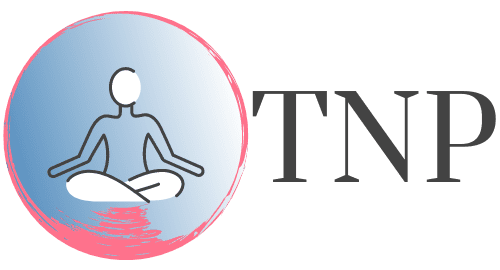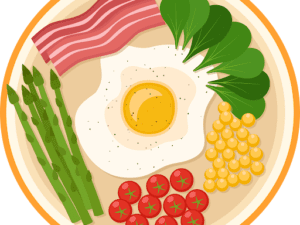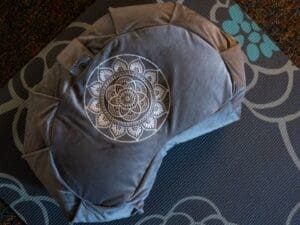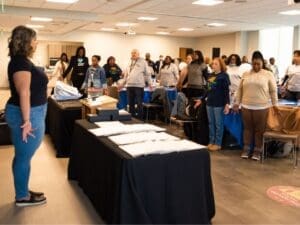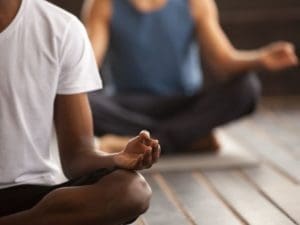- Description
- Curriculum
- FAQ
- Notice
- Reviews
-
2Welcome Session Recording
Welcome session recording
-
3Welcome to Module 1
-
4Introduction to Yoga
What is yoga?
-
5Timeline
-
6The Vedas
-
7The Many Paths of Yoga
-
8Box Breath
-
960 Minute Practice
-
10Additional Journal Prompts
-
11The 8 Limbs
-
12Introduction to Patanjali's 8 Limbs of Yoga
-
138 Limbs of Yoga Reflection
-
14The Yoga Sutras
-
15Sutra of the Day Calendar
-
16Yamas
We will discuss the yamas and niyamas more in our live session. The video and text in this section complement the book- while many of the books in the course only ask you to read sections, this book we recommend you read fully! It will enhance your life and your teaching/facilitation.
-
17The Yama Challenge
-
18Nyamas
Saucha, Santosha, Tapas, Svadyaya, Ishvara
-
19The Niyama Challenge
-
20The Gita
There is so much to learn from the Bhagavad Gita, this is just a small introduction to the work.
-
21The Bhagavad Gita Cartoon
We've included this video from another creator, we encourage you to visist their page to engage and learn more.
-
22Gita Verse Reflection Activity
-
23Bhakti Yoga Practice: Creating a Personal Devotional Ritual
-
24Appropriation vs Appreciation
We will discuss this more during our live session.
-
25An Overview of the Chakra System- Bonus Lesson!
-
26November 10th, 1:30PM EST Live Session
-
27Module 1 Quz
-
28November 10th Live Session Recording
-
29Welcome to SEL
Welcome to the Social Emotional Learning Module.
-
30Emotion Wheel
-
31What is Social Emotional Learning?
-
32Understanding the Brain and Emotional Regulation: The Foundation of SEL
-
33The Neurosequential Model and Jumping Floors
-
34More About the Nervous System
-
35Reading Assignment
Chapter 2 of A Clinicans Guide to Mindfulness
-
36Part 1 Reflection
-
37Personal SEL Foundation Reflection
-
38Part 1 Personal Reflection
-
39Let's Practice- Body Awareness
Take this script and the video and create your own practice, this will be a great way to start any adult SEL session.
-
40Understanding and Applying CASEL
-
41What's Next? Creating Workshops
-
42What are Relationship Skills?
-
43Reading Assignment Relationship Skills
-
44Sample Relationship Skills Workshop
-
45Bonus- Ideas for Relationship Skills Workshops
-
46Create a workshop/talk outline.
-
47What is Self Awareness?
-
48Reading Assignment Self Awareness
-
49Sample Self Awareness Workshop
-
50Bonus- Ideas for Self Awareness Workshops
-
51Create a workshop/talk Self-awareness
-
52What is Self Management?
-
53Reading Assignment Self Management
-
54Sample Self Management Workshop
How to Sequence and Cue- Submit a Recording
-
55Bonus-Ideas for Self Management
-
56Create a workshop/talk Self Management
-
57What is Social Awareness?
-
58Reading Assignment Social Awareness
-
59Sample Social Awareness Workshop
-
60Bonus- Ideas for Social Awareness Workshops
-
61Create a workshop/talk Social Awareness
-
62What is Responsible Decision Making
-
63Reading Assignment Responsible Decision Making
-
64Sample Responsible Decision Making
-
65Bonus-Ideas for Responsible Decision Making
-
66Create a workshop/talk Responsible Decision Making
-
67November 24th, 1:30PM EST Live Session
-
68Introduction to Anatomy
Meet your teacher, Dr. Kali Arnold
-
69Why learn anatomy?
-
70Directional Terms & Types of Movement
-
71Skeletal System
-
72Types of Joints
-
73Types of Movement
-
74Additional Video
-
75Feet and Ankles
Explore the structure and function of the feet and ankles, understanding their importance in balance and movement.
-
76Legs and Knees
Delve into the anatomy of the legs and knees, focusing on their role in stability and movement.
-
77Hips
Study the hips' anatomy, their range of motion, and their significance in supporting the body's weight and facilitating movement.
-
78Spine, Neck, and Head
Understand the anatomy of the spine, neck, and head, emphasizing alignment and the nervous system's role in posture and movement.
-
79Core and Abdominals
Learn about the core and abdominal muscles, their function in stabilizing the body, and their importance in movement and breath.
-
80Hands, Wrists, and Arms
Examine the anatomy of the hands, wrists, and arms, focusing on their function in daily activities and yoga postures.
-
81Shoulders
Explore the complex anatomy of the shoulders, understanding their range of motion and vulnerability to injury.
-
82Anatomy Quiz
-
83Final Considerations
-
84January 5th, 1:30PM EST Live Session
-
85Intro to Asana (Yoga 101)
-
86Before you Teach
-
87Sanskrit Pose Names
Not all teachers use sanskrit in their teaching. At TNP we tend to stay away from sanskrit however we do want to provide you with the names of most poses for you to know and practice.
-
88Mountain Pose
-
89Table, Cat, Cow, Threaded Needle, Plank, Down Dog, Cobra
-
90Warrior I, Warrior II, Warrior III, Reverse Warrior, Humble Warrior
Teach Back
-
91Side Angle, Triangle, Reverse Triange
-
92Crescent Lunge, Twisted Crescent Lunge
-
93Practice- Foundational Poses
Teach Back
-
94Forward Fold, Cobra, Chaturanga, Vinyasa
-
95Starting to build sequences
-
96Sun A
-
97Balance Poses
Teach Back
-
98Seated forward folds
-
99Pigeon, Spinal Twists, Happy Baby
-
100Final Rest
-
101Trauma Informed Power Yoga
-
102Yoga Class 1
Teach Back
-
103Yoga Class 2
-
104Yoga Class 3
-
105Yoga Class 4
-
106Yoga Class 5
-
107Yoga Class 6
-
108Yoga 7
-
109Restorative Yoga
-
110Create a Sequence
-
111Asana Quiz
-
112February 1st, 1:30PM EST Live Session
-
113Introduction to Trauma Informed Yoga
-
114Applying Somatics to Your Yoga Practice
-
115The Autonomic Nervous System
-
116The Window of Tolerance
-
117Scope and Considerations for Teachers
-
118Trauma informed Rest and Savasana
-
119Sequencing for Nervous System Regulation
-
120February 2nd, 1:30PM EST Live Session
-
121SEL in Schools
-
130The Basics of Yoga for Kids
-
131What does 'Trauma Informed" mean?
-
132Pre-K and Elementary
-
133Middle School
-
134High School
-
135Somatic Practices for Up Regulation
-
136Somatic Practices for Down Regulation
-
137Songs, Chants, and Games
-
138Chair Yoga for Kids
-
139Creating Classes for Youth
-
140Let's Talk about DBT
-
141February 22nd, 4pm PM EST Live Session
-
142Intro to Meditation
-
143Trauma informed meditation
Learn how to adapt meditation practices to be trauma-sensitive, ensuring that they are safe and supportive for individuals who have experienced trauma. This lesson emphasizes creating a mindful space that respects personal boundaries and supports emotional regulation.
-
144Yoga Nidra
A guided deep relaxation practice, Yoga Nidra, often referred to as "yogic sleep," helps reduce stress and promote deep healing and rest.
-
145Guided Practices- Body, Breath and Thoughts
Explore guided meditation techniques that focus on body awareness, breath control, and observing thoughts, providing practical tools for enhancing mindfulness.
-
146Metta or Loving Kindness
-
147R.A.I.N Meditation
Learn the R.A.I.N. (Recognize, Allow, Investigate, Nurture) meditation technique, which is a powerful method for working with difficult emotions and fostering self-compassion.
-
148February 22th, 1:30PM EST Live Session
-
149The Business of Yoga
-
150Pricing- How to Ensure You're Charging Enough
-
151Community Yoga- Getting Sponsors for Community Events
-
152Kids Yoga- Classes, Parties, and School Programs
-
153Corporate Wellness- Designing Workshops, Pricing, and Contracts
-
154Professional Organizations
-
155Ethical Commitment
-
156Wellness Retreats
-
157Sample Communications - How to Reach Decision Makers
-
158March 2nd 1:30PM EST Live Session
1. Apply for a scholarship through the TNP Foundation, reducing costs by up to $1,300.
2. Educators can seek funding from their school or district, including options like Title II funds and other professional development funding.
3. Utilize Affirm or Klarna for a low or no-cost payment plan, available through our registration link.
4. Consider fundraising in your community or online platforms like donorschoose.org.
For inquiries about payment options, please email info@tnpwellness.net.
Scholarship Eligibility and Prioritization:
The Foundation Board prioritizes applicants based on the following criteria:
1. Community Service:
– Applicants providing services to communities in need.
– Individuals involved in the nonprofit sector.
2. Diversity and Inclusion:
– BIPOC (Black, Indigenous, and People of Color) students.
These criteria ensure that scholarships are awarded to those who can have the most significant impact on underserved communities and promote diversity within our programs.
To apply simply submit a funding request here. https://tnp-foundation.org/scholarshipapp/
At TNP, we've led the way in diverse trauma-informed training since 2019. Our programs offer more than just knowledge; they empower you to advance your career and personal growth. With comprehensive modules and courses, we cater to teachers, parents, and facilitators, providing valuable CEUs along the way. Choose TNP and discover why we're the trusted choice for impactful trauma-informed practices.
